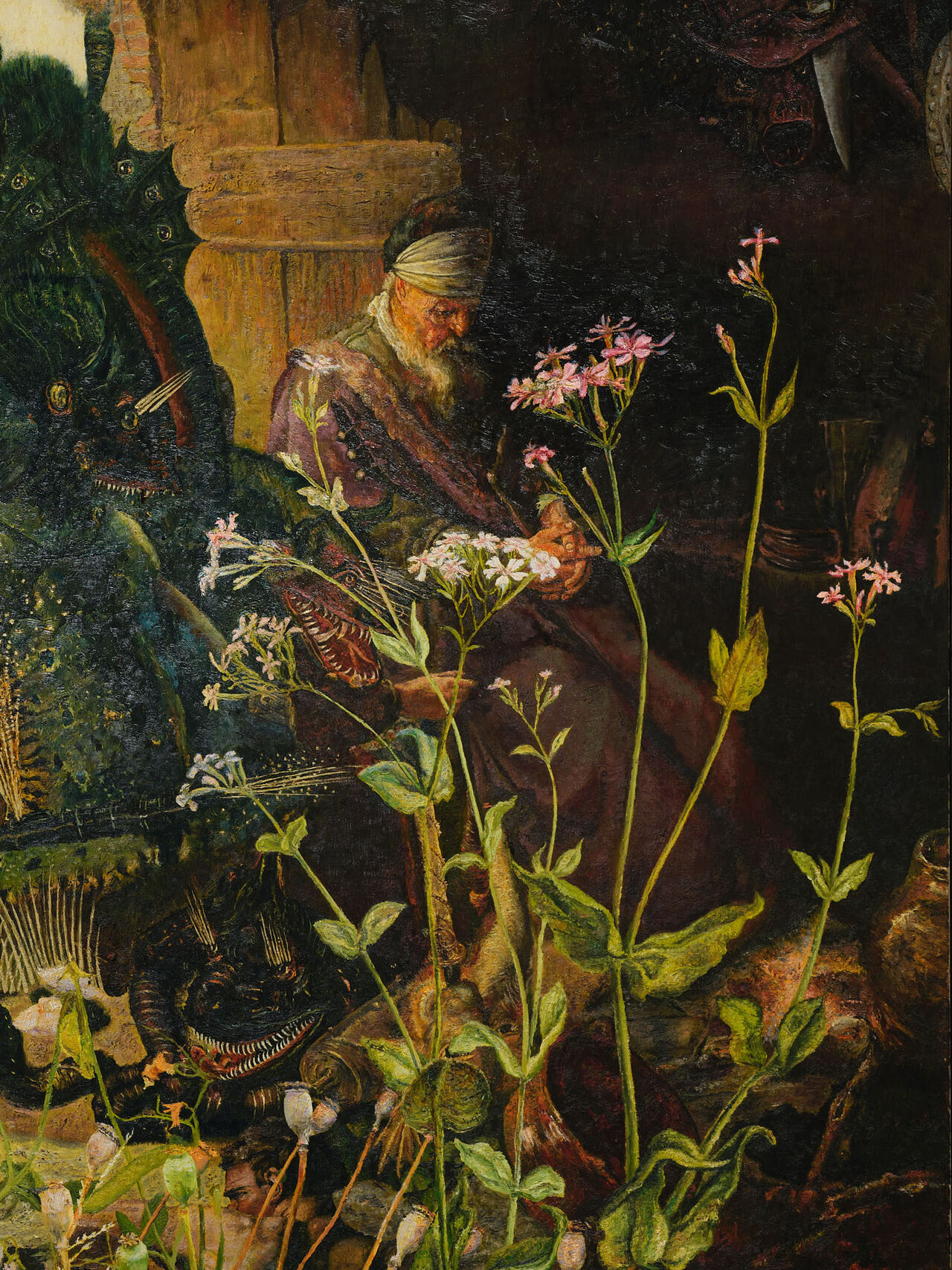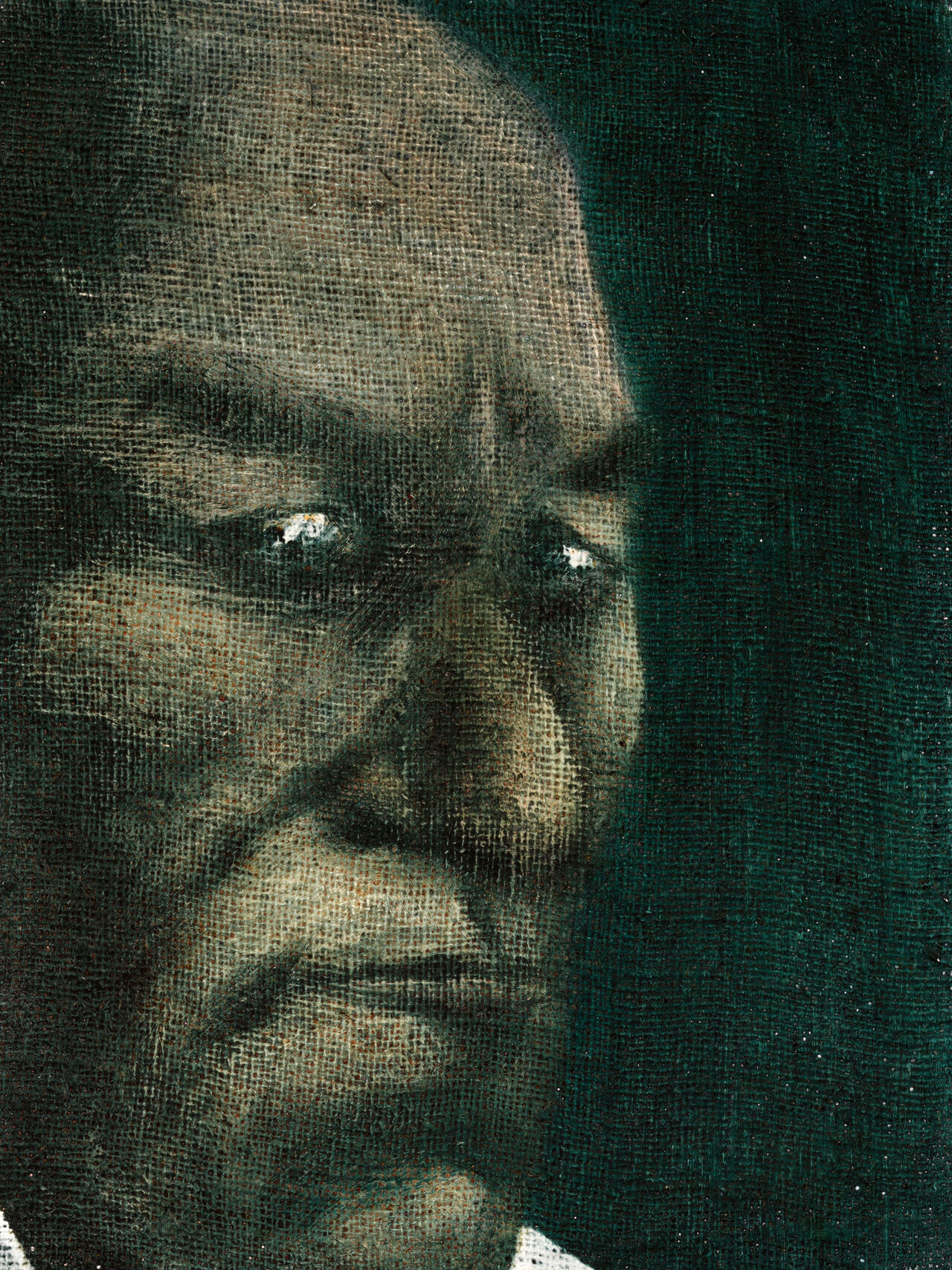Tony Fomison 'Someone's Visit' (Second Version No.57)
Martin Edmond
Essays
Posted on 5 August 2025
In the catalogue for the 1993 retrospective, What Shall We Tell Them?, the first version of this painting, made in 1972, is listed as ‘whereabouts unknown’. The catalogue doesn’t, however, say when it was lost. This second one, from 1973, might be a replacement for a missing work; or it might be a further exploration of a theme that interested the artist at the time. We can’t know for sure but I suspect, given the title, that someone made off with the first one, leaving its ghost in Fomison’s records. That was the kind of thing that happened in Christchurch in the early 1970s, when works were often lent and not returned and sometimes just plain stolen. From a party, say, or after a visit. This one is small enough to fit under somebody’s coat.
I hadn’t encountered the work before. On first sight, looking at a thumbnail, I thought it was a self-portrait. But when I looked again, at a larger version, I thought no. Or rather, not exactly. Fomison could say, like Walt Whitman (and latterly Bob Dylan) ‘I contain multitudes.’ And among those multitudes were his future selves. Or perhaps I should say future incarnations. This figure, with the white conical hat and the blue coat with wide collar and lapels, bearing inscrutable insignia, could be from the future. The face, with its deep crevasses and folded skin, the pinkish lips set in a line that suggests resignation, is landscaped by age and suffering.

He is, the title tells us, ‘Someone’. Not anyone. And he’s visiting — who? Well, first of all the artist and secondly, by means of the painting, anyone who looks at it. He could be a wayfarer, calling for sustenance or aid. He could be an emissary, bearing a message only he can deliver. He could be, as suggested above, from the future. I don’t imagine a corporeal visit. I don’t think Tony answered the door one day and this fellow was standing there on the threshold. The visit is a ghostly one and if a message is being delivered, I think it is probably about age and suffering. Or rather, about what suffering does to us as we age. Fomison, I think, saw a future version of himself in his mind’s eye and painted that.
Or perhaps it isn’t that at all. If you contain multitudes, those who people your days and nights can be both real and unreal. They can be actual friends or acquaintances who nevertheless live in your head as images; or they can be imaginary beings like those who manifest in dreams or visions. They can be strangers you see passing in the street who for some reason stay in mind. Fomison had lived rough in Paris and London; he had been locked up in asylums and jails. He was also, as a Jungian, someone who believed in the collective unconscious and in entertaining the entities found there. The use of colour — the metallic blue, the fugitive pink — is subtle and, if not unprecedented, then still an excellent early example of Fomison’s move away from the monochrome. And this Someone is compelling, so much so that, like the noir postman, he always rings twice.


